Star formation activity in galaxies
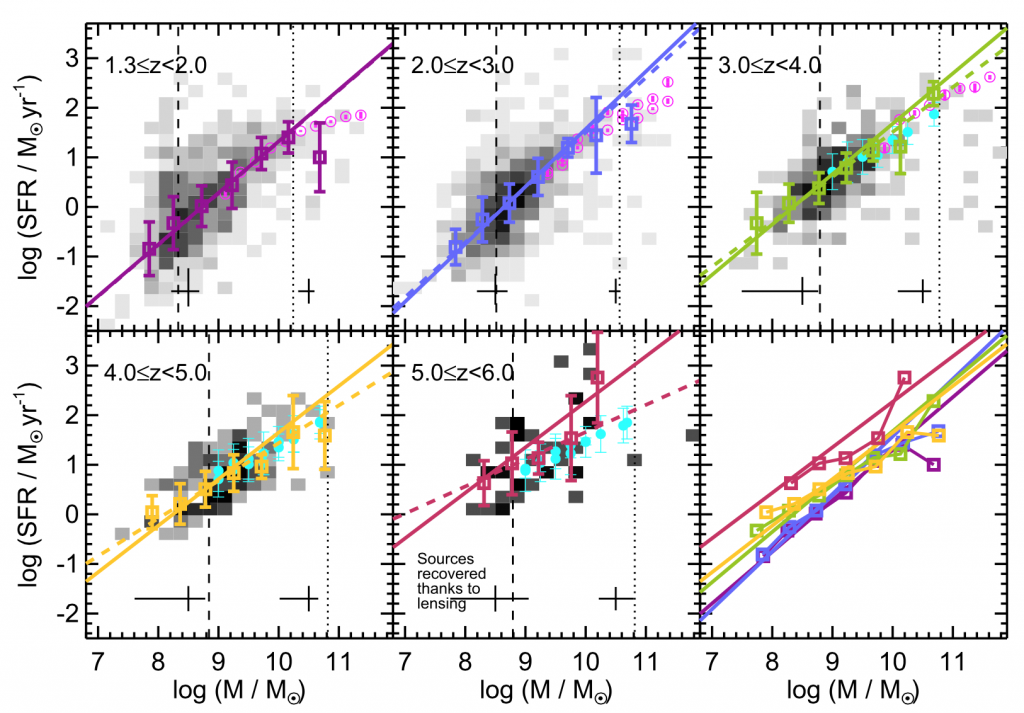
Star formation is the main physical process by which galaxies grow. The rate at which gas is converted into stars (SFR) is therefore a key tracer of galaxy evolution. The SFR in galaxies has been found to correlate tightly with their stellar mass, defining the so-called Main Sequence (MS) of star-forming galaxies.
In Santini+17 we measured the MS relation out to redshift 6 by means of deep HST Frontier Fields observations. Gravitational lensing allowed us to sample the MS down to very low stellar masses and study its evolution after correcting for the Eddington bias.
During my PhD, I studied the star formation activity of 0<z<2.5 galaxies by comparing IR-based SFR estimates (from Spitzer-MIPS 24 micron observations) with UV-based ones, analyzing the systematics associated with these two SFR tracers, and investigating evidences for a downsizing behaviour (Santini+09). The same work also presents the v2 release of the GOODS-MUSIC catalog, a 15 bands multiwavelength catalog in the GOODS-S field.
Passive galaxies in the early Universe
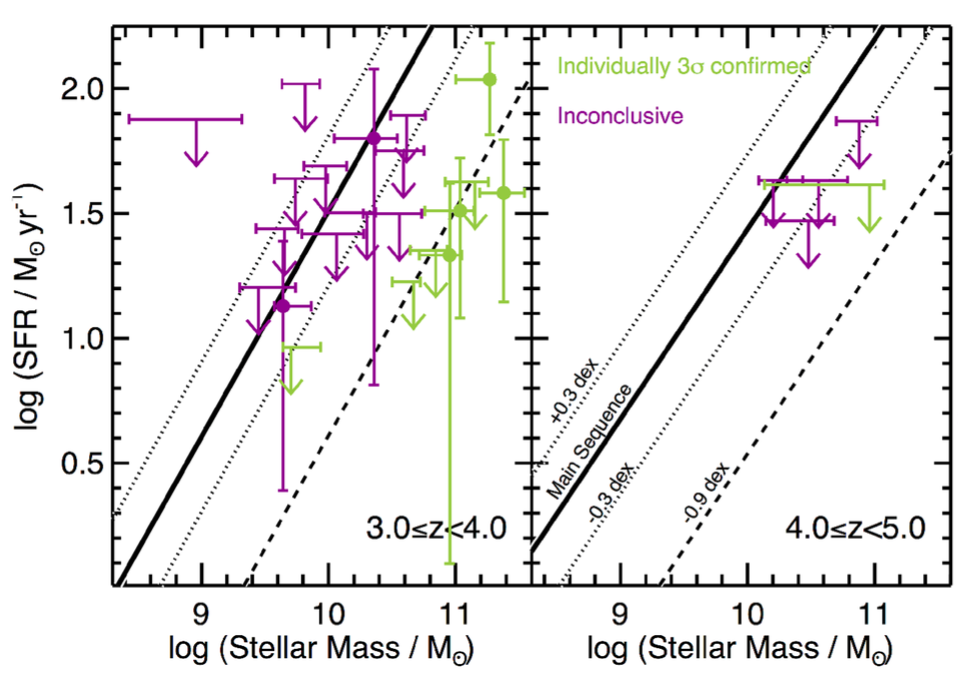
The existence of massive, passively evolving galaxies at high redshift represents an arduous challenge to theoretical models of galaxy formation that struggle to reproduce the observations. The abundance of these galaxies at different epochs is a crucial observable to constrain the different physical processes responsible for their rapid assembly and for the abrupt shut-down of their star formation activity.
In Fontana+09 we developed a selection technique to single out a complete sample of massive quiescent galaxies out to z=4, and compared their fraction with theoretical predictions. In Santini+19 we confirmed the passive nature of a sample of red and dead galaxies at z>3 selected through an accurate and conservative SED fitting (Merlin+18) by means of ALMA archival data: sub-mm observations reveal the lack of on-going star formation by breaking the parameter degeneracy affecting the optical domain.
Stellar mass assembly
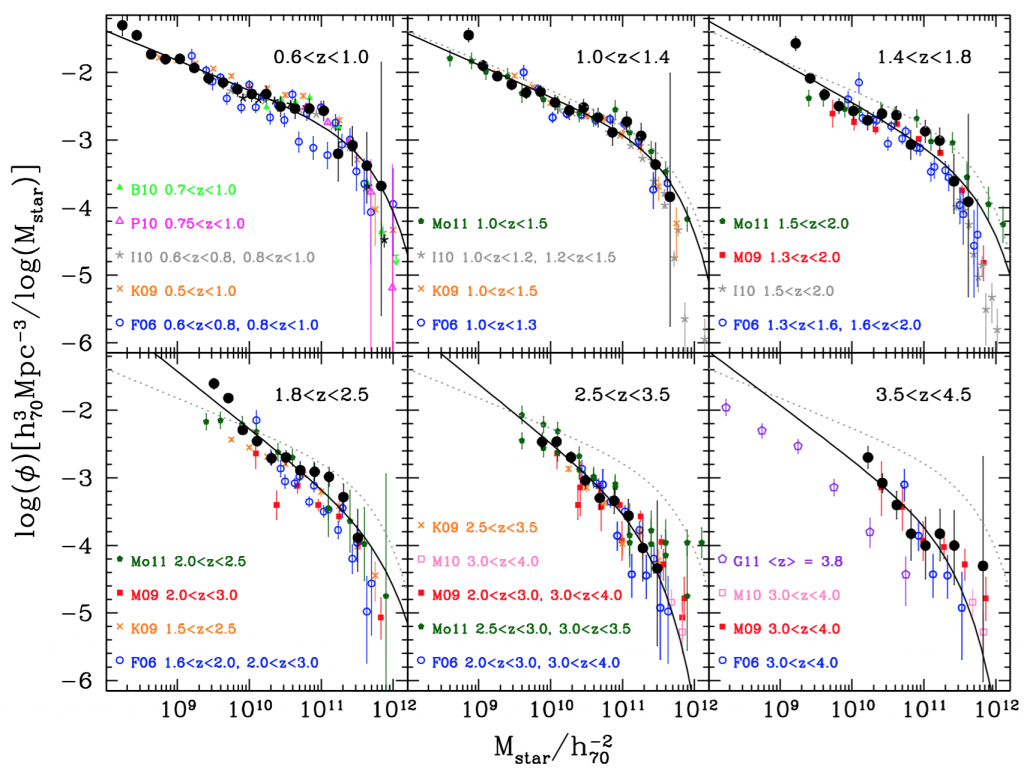
Stellar mass is one of the fundamental physical parameters describing galaxy evolution. Part of my research has been dedicated to understanding the best and most accurate way to estimate galaxy stellar masses.
I assembled the stellar mass catalogs for the CANDELS GOODS-S and UDS fields. These catalogs include stellar masses and other physical parameters as estimated by various teams within the collaboration, as well as the CANDELS reference median masses. The catalogs are available here and are presented by Santini+15. In this paper we also study the effect of specific parameters and assumptions on the stellar mass estimate.
From a statistical point of view, the mass assembly process in galaxies is described by the stellar mass functions (SMF). Together with their integral over stellar mass, the stellar mass density, they provide precious information about how galaxies have grown through comic time. In Santini+12a we analysed the SMF out to z~4 using the deepest near-IR data available at the time (WFC3 ERS and Hawk-I K-band observations), while in Grazian+15 we estimated the SMF from the CANDELS GOODS-S and UDS fields at 3.5<z<7.5.
Dust and gas content in galaxies
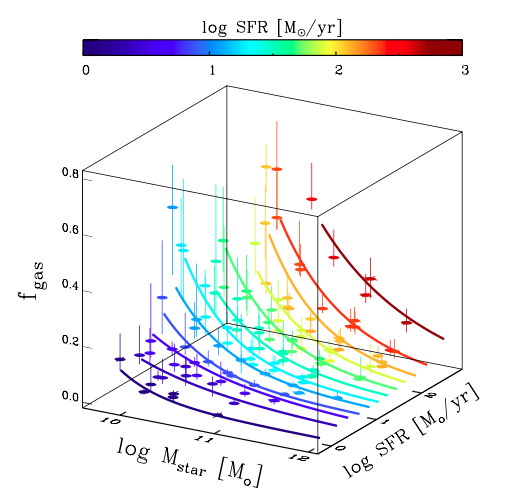
Dust, despite representing only ~1% of their total mass, is an important component of galaxies, as it reflects their past formation history and affects the formation of new stars. Moreover, it is a proxy for the galaxy metal content and for the gas mass, the main ingredient driving galaxy evolution. Thanks to Herschel observations, in Santini+14 we could study the dust and gas content in galaxies, the scaling laws linking them to the others two fundamental galaxy physical parameters, i.e. the SFR and the stellar mass, and the evolution of such relations with cosmic time. With Herschel SDP data, in Santini+10 we investigated the dust mass in a sample of high-z sub-mm galaxies and compared it with their stellar mass and gas metallicity, as well as with local ULIRGs and local normal star-forming galaxies.
Characterization of elusive, faint, dusty star-forming galaxies
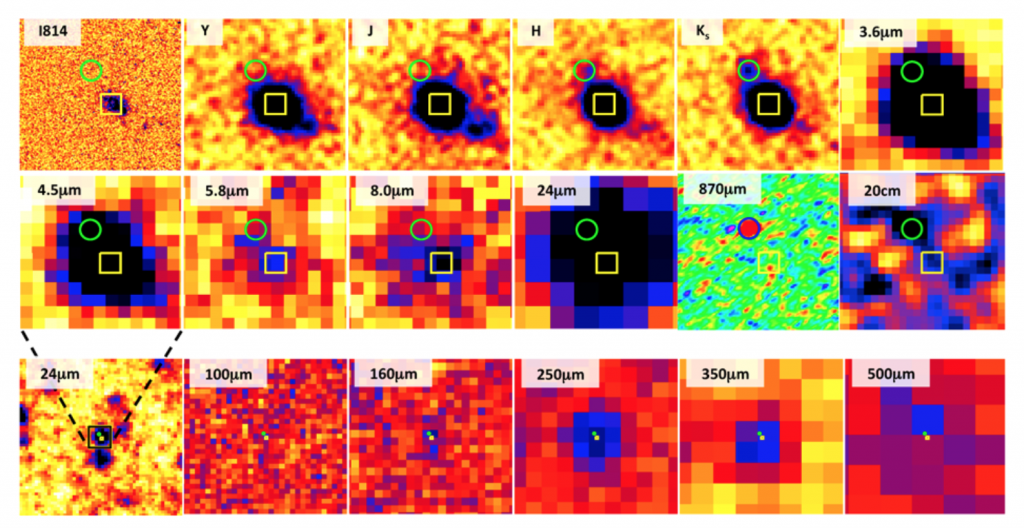
Sub-mm observations reveal an elusive class of star-forming galaxies, that are heavily dust-enshrouded and optically undetected. This faint galaxy population is often not included in the cosmic Star Formation History (SFH) and in the stellar mass budget, and likely represents an important and missing piece in our understanding of galaxy evolution. Their observation and physical characterization is of major importance to achieve a solid picture.
In Santini+16 we report the serendipitous ALMA detection of a faint z~3.3 SMG lensed by a foreground z~1 galaxy. The careful multiwavelength characterization of this two-galaxy system allowed us to accurately uncover the physical properties of both galaxies and add one member to the still sparse population of known faint, dusty, star-forming galaxies that are important contributors to the cosmic SFH.
Properties of AGN host galaxies
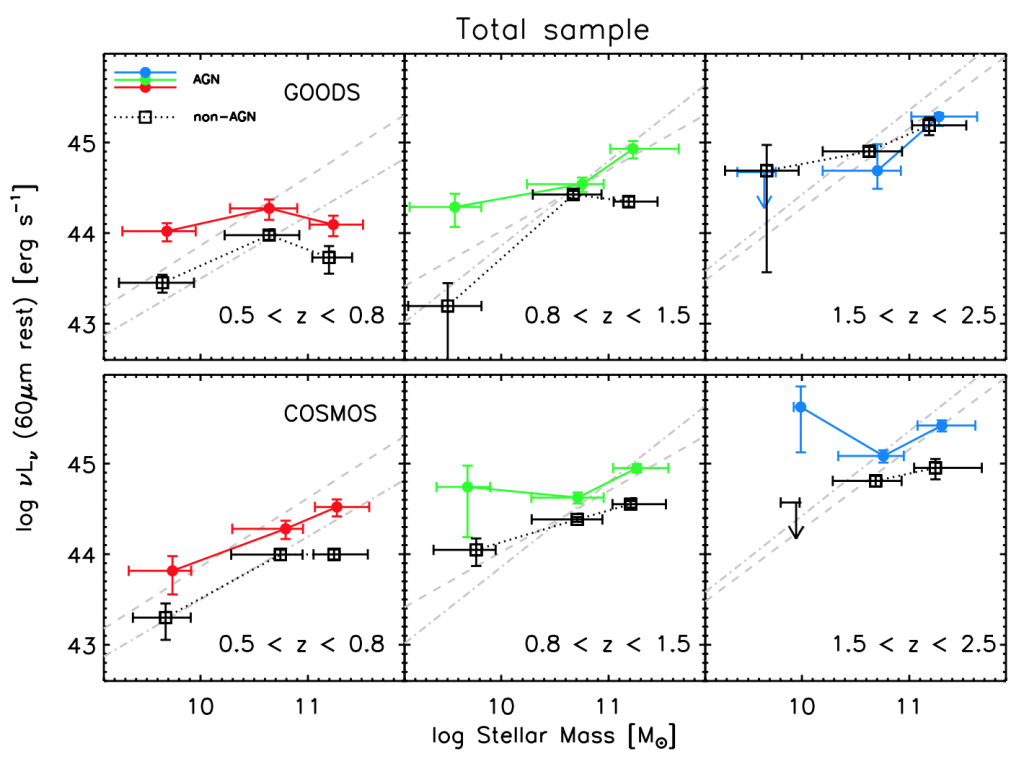
Galaxy evolution is tightly connected the the evolution of the AGNs hosted at their centres. These two populations are mutual interacting, or co-evolving, and none of them can be studied separately from the other. One of the currently hottest topics is the effect of the AGNs on the star formation activity in the host galaxies, or ultimately the role of gas abundance in driving both star formation and AGN accretion.
Within the PEP-Herschel collaboration, a series of works were dedicated to studying this topic. In Santini+12b we compared the average SFR in AGN hosts with that observed in a sample of mass-matched inactive galaxies. In Rosario+12 we studied the SFR in AGN hosts against their AGN luminosity. In Rosario+13 we explored the question whether AGNs are preferentially found in galaxies that are forming star or that are undergoing the transition to the quiescent phase. In Vito+14 we investigated the gas content in a sample of AGN host galaxies compared to a control sample of mass-matched inactive galaxies.
Comparison between observations and theoretical predictions
While able to reproduce the global scenario of formation and evolution of galaxies, theoretical models still show several puzzling discrepancies with the observations. Understanding these discrepancies is of major importance to improve our knowledge.
In collaboration with the theoretical groups at the Observatory of Rome and the Observatory of Trieste, I carried out several comparison between observations and theoretical predictions. Some of these comparisons can be found in Santini+09, Fontana+09, Fontanot+09, Santini+12a, Fontanot+12, Lamastra+13a, Lamastra+13b, and Santini+14.
